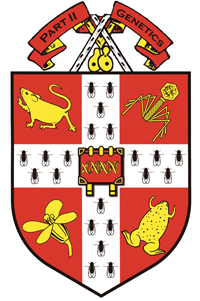Members of the Department of Genetics contribute the following components of the course:
Dr Christine Farr (and Prof Liz Murchison) : Introduction to Medical and Veterinary Genetics
The aim of these lectures is to introduce you to the importance of genetics in human and animal health and to focus on many of the basic principles and concepts which form the foundation for understanding genetics in the clinic and in biomedical research today.
Lecture 1
- Gemones and gemone variation.
Lecture 2
- Mutation, selection and genetics drift.
Lecture 3
- Disease genetics.
Lecture 4
- Somatic genetics and cancer.
Lecture 5
- Sex chromosomes, sex-linked inheritance and X inactivation.
Lecture 6
- Epigenetics and mitrochondrial genetics.
Lecture 7
- Genes and variants in populations.
Lecture 8
- Revision session.
Further information about the course
Course Organiser : Katheryn Lilley, ksl23@cam.ac.uk
Course Administrator : Biochemistry Teaching Office, UG-admin@bioc.cam.ac.uk
Page updated 31/07/2025

